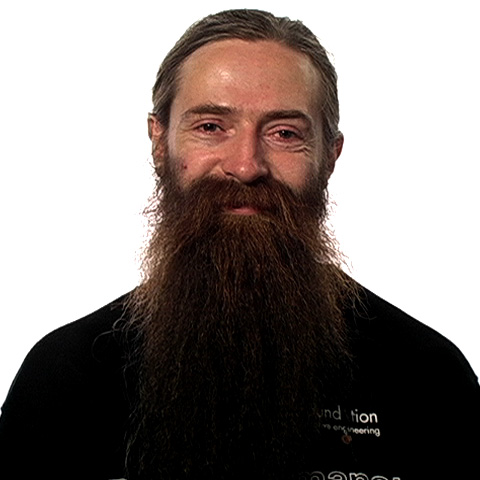The price of Silicon Valley’s obsession with immortality

- In The Price of Immortality: The Race to Live Forever, author Peter Ward explores the science, origins, and quixotic goals of the immortalist community.
- Silicon Valley has infused massive capital into anti-aging research over the past two decades.
- But despite bold claims from immortalists, they've yet to produce concrete evidence that humanity can someday engineer death into becoming optional.
Excerpted from The Price of Immortality: The Race to Live Forever, written by Peter Ward and published by Melville House.
Since the 1980s, wave after wave of technological change originating from Silicon Valley has crashed over the world. Each jump in progress has spawned new industries, fortunes, and even universes. A growing band of geeks steadily grew wealthier, and their influence expanded along with their bank balances. Behind each multibillion-dollar company was a flock of venture capitalists who readied their checkbooks when young startups needed them most and reaped the rewards when they grew into the monoliths that now prop up the American economy. Since the birth of the personal computer, the moment when high-technology made its way into the home, Silicon Valley has swallowed industries whole, one by one. The internet changed commerce forever, enabling all-conquering profit machines like Jeff Bezos’ Amazon. Ride-hailing apps like Uber and Lyft quickly engulfed the transportation industry, while Airbnb and Seamless revolutionized hospitality. Technology transformed finance, logistics, media, and entertainment. It was only a matter of time before Silicon Valley turned its now all-seeing eye to the health care industry, America’s most broken, and profitable, institution. Biotech companies have always fit snugly into the startup template. They begin as cash-hungry long shots, and when their treatments are approved, they pay gigantic dividends. When the men with the money sensed a quickening in anti-aging, they fell over each other to pump cash into young companies addressing just the kinds of fields that make immortalists so hopeful.
And so the world of immortalism crashed headlong into Silicon Valley and all its billions, guided by the man who has done more for the cause of immortality than anyone else. Aubrey de Grey, already mentioned in previous chapters, enjoys god-like status in the immortalist community. Over time he’s publicized the goal of defeating aging and even made it somewhat fashionable. His rejuvenation theories, once scoffed at, were slowly accepted as fact by the scientific community, and he now sits at the center of a network patiently built over decades, in the middle of the science, the money, and the immortalists, his adoring fans.
De Grey has always appreciated the value of the media in his quest and has been interviewed for magazines, newspapers, websites, and documentaries countless times. He makes for a great spokesperson for such an eccentric community. Past articles noted his Rasputin-like beard, wild auburn hair, and tendency to crack open a beer at all times of the day. When we spoke on a video call, de Grey dialing in from his Silicon Valley base, I was relieved to see he lived up to all the hype. His beard was suitably wizardly, his red hair graying but still untamed, and not long into our call I heard the sound of a beer bottle hissing open at midday, California time. He talked like an idiosyncratic member of the old English aristocracy, rapidly and without pause, and at times I got the sense I’d signed up for a lecture rather than an interview.
When de Grey was between eight and nine years old, his mother pressured him to practice the piano. The young Englishman resisted, and even at that tender age that instinct intrigued him and warranted further introspection. He concluded he didn’t want to practice the piano because he wanted to improve the quality of life for the whole of humanity. He still doesn’t know where that urge comes from, but it has driven him his whole life. “It led me to be very sure I never wanted to have kids, because for sure that’s a very time-consuming thing that prevents you from doing other stuff,” he told me.
After deciding scientists were the people who made the biggest difference to the world in the long run, de Grey began learning computer programming when he was fifteen and quickly found he was extremely adept at it. He went to the University of Cambridge to study computer science in the early 1980s, then worked for six or seven years in artificial intelligence research. De Grey always considered aging to be the greatest challenge of humanity but was content knowing it was covered by the world’s biologists, and he began fixing another issue, “the fact that people had to spend so much of their time doing stuff they wouldn’t do unless they were being paid for it.”
But at a graduate party in Cambridge, de Grey met the fruit fly geneticist Adelaide Carpenter, who he later married. His relationship took him into the world of biology academia, and he was shocked when he discovered aging was way down the list of priorities in the discipline. “It took me a couple of years to come to terms with that, really, but once I did I realized I had no choice, I just had to switch fields,” he recalled.
De Grey first gained notoriety when he published his 1999 book The Mitochondrial Free Radical Theory of Aging, in which he argued immortality was theoretically possible for humans. At the center of his thinking was a concept called strategies for engineered negligible senescence, abbreviated to SENS. In 2005, MIT Technology Review announced a $20,000 prize for anyone who could successfully argue that de Grey’s theories were more fantasy than science. To claim the prize, the entrants had to prove that SENS was “so wrong it was unworthy of learned debate.” There were five submissions, of which three met the terms of the challenge. But the judges decided none of them met the criteria for victory and disproved SENS.
“The scientific process requires evidence through independent experimentation or observation in order to accord credibility to a hypothesis. SENS is a collection of hypotheses that have mostly not been subjected to that process and thus cannot rise to the level of being scientifically verified. However, by the same token, the ideas of SENS have not been conclusively disproved. SENS exists in a middle ground of yet-to-be-tested ideas that some people may find intriguing but which others are free to doubt,” Nathan Myhrvold, one of the judges and cofounder of Intellectual Ventures and former chief technology officer of Microsoft, wrote.
In 2009, de Grey set up the SENS Foundation, a nonprofit and the world’s first organization dedicated to curing aging. Through the charity, de Grey was able to place himself in a position to link the scientists working on rejuvenation who could prove him right with sources of investment. None of the labs that received money were required to declare they were working toward immortality, or even extended life, and some of the most respected scientists in the gerontology field received funding.
SENS is based in Silicon Valley, where the billionaires have deep pockets and don’t shy away from a difficult challenge. De Grey thinks the Valley’s forgiving attitude toward failure is the secret to its success. “That made Silicon Valley what it is today in IT, and more recently in biotech,” he said. “And it continues to be an absolutely essential ingredient for anything where you’re in the real vanguard. Anything that isn’t really a thing yet but is on the way to becoming a thing. Of course, longevity is very, very much that.”
It does help to have money, as well. More and more of Silicon Valley’s billionaires have developed a personal passion in health and extended life over the past decade. Tad Friend’s 2017 New Yorker article titled “Silicon Valley’s Quest to Live Forever” most notably described the obsession through Friend’s reporting from a symposium held in an aging expert’s living room in Los Angeles, where celebrities and Silicon Valley elites gathered to grill the biologists on their chances of making death optional. Some of the wealthiest people in the technology industry have spent huge sums of money on projects attempting to defeat aging. Some see this as an altruistic endeavor which can help the whole of humanity, others as the quickest route to living longer themselves, while some see it merely as a profitable industry of the future. The technology industry’s participation in the field of aging, both in a personal and professional capacity, has been relentlessly mocked the world over. The HBO comedy drama Silicon Valley featured moguls pumping the blood of the young into their veins to extend their lifespan, one of the many practices touted as the next big thing in life extension.
One of the characters who is heavily rumored to have invested in this field is Peter Thiel. Thiel cofounded the payment giant PayPal and several other successful startups but is perhaps best known for his litigiousness and pseudo-libertarianism. He bankrolled the former wrestler Hulk Hogan’s lawsuit that bankrupted the publisher of Gawker in revenge for an article written about Thiel years earlier that outed him as a homosexual. A self-declared libertarian and a supporter of the Libertarian Party, he migrated quickly in 2016 to feed off Donald Trump’s bare faced nationalism and xenophobia. In recent times, his name has been repeatedly linked to startups offering young blood transfusions similar to those seen on TV, which has only bolstered his reputation of having something of the night about him. In short, if ever there was a powerful reason to abandon life extension research, it might be the thought of Peter Thiel living forever.
Experiments in young blood transfusions have shown early promise. In tests on mice, older subjects injected with youthful blood were found to be more active, although any testing in humans has been less encouraging. That hasn’t stopped people profiting from the practice. California-based startup Ambrosia captures the most attention in this field. The company, founded in 2016 by CEO Jesse Karmazin, began by charging patients $8,000 for one liter of youthful plasma. Karmazin leaned heavily on the prospect of immortality to sell its services. The startup is named after the mythical food that made Greek gods immortal, and the founder said in interviews the treatment “comes pretty close” to immortality.
In February 2019, the FDA weighed in on young blood transfusions, declaring the benefits unproven and side effects potentially harmful. “We’re alerting consumers and health care providers that treatments using plasma from young donors have not gone through the rigorous testing that the FDA normally requires in order to confirm the therapeutic benefit of a product and to ensure its safety,” DA Commissioner Scott Gottlieb and Peter Marks, Director of FDA’s Center for Biologics Evaluation and Research, wrote in a statement. “We’re concerned that some patients are being preyed upon by unscrupulous actors touting treatments of plasma from young donors as cures and remedies.”
Karmazin said the FDA did not contact him directly before or after issuing the statement and didn’t take any action against Ambrosia. Regardless, he put his business on hold almost immediately after the statement was issued “under an abundance of caution.” In August that year, it was reported the company had shut down entirely and Karmazin had moved on to another business, Ivy Plasma. The website for the new company suggested it would be offering the same services as Ambrosia, but the plasma would not be sourced specifically from younger people. Karmazin later said the Ivy Plasma website was part of an effort to rebrand, but he soon decided customers wanted to buy their blood from Ambrosia, not Ivy Plasma. By October, the old website was operational again, and Ambrosia began to offer its services once more. Despite graduating from Stanford Medical School, Karmazin is not licensed to practice medicine and so can’t perform the transfusions himself, so instead he contracts doctors to carry out the procedures. As of 2021, the Ambrosia website is still accepting customers, although the prices have dropped, and one liter of young blood now costs only $5,000.
Young blood transfusions, despite apparently finding a consumer base in Silicon Valley, remain on the fringes of longevity offerings, and as of now can be safely considered similar to snake oil. But the technology industry’s march into life extension is not limited to crazed opportunists; some of the biggest names in the world are involved. Like Google.
The founders of the search engine giant, Larry Page and Sergey Brin, announced their intention to cure death in 2013, when they created Calico. Bill Maris, the CEO of Google’s venture capital arm, did the initial legwork. His father died of a brain tumor when Maris was twenty-six, an event that forced him to confront the finality of death. Maris built a reputation as a shrewd investor in young technology companies that went on to be massive like Uber and the smart thermostat startup Nest. When he made the decision to build a company that would tackle death, he consulted Ray Kurzweil, one of the most revered figures in the immortalist community.
Kurzweil first popularized the concept of the technological singularity, a single moment where progress explodes and artificial intelligence surpasses that of humans, leading to us merging with computers to become superpowered immortals. He is a renowned inventor and technologist who has produced many best-selling books. In 2012, Page personally hired Kurzweil to work at Google. Kurzweil is also a registered member of Alcor and will be cryopreserved if he dies before the singularity. He predicted in the year 2000 that cryonics would figure out how to reanimate patients within forty to fifty years.
Kurzweil approved of the idea, but Andy Conrad, a geneticist who led Verily, the life sciences division of Alphabet, Google’s parent company, told Maris how difficult his task would be to execute. Unperturbed, Maris pitched his idea to one of Google’s top investors, John Doerr, in 2011, asking the billionaire why he’d ever want to die if he was so wealthy. Of course, Doerr lapped it up and took the pitch to Google’s founders, Brin and Page. The duo soon declared the plan would be executed in-house at Google.
Calico, which is short for the California Life Company, launched shortly after with $1 billion in funding. Anti-aging advocates, gerontologists, immortalists, and other groups grew excited at the thought of such a gigantic company entering into this field of work. “Calico added a tremendous amount of validation to aging research,” George Vlasuk, the head of a biotech startup called Navitor, told The New Yorker.
But their hopes were soon dashed when it became clear Calico intended to keep almost all of its progress completely secret. The company vacuumed up a lot of talent from labs all over the world but has released barely any details about its work.
And even for those with the inside track on what was going on, the company has turned out to be a bitter disappointment. “They have totally fucked it up. I mean, they have royally fucked it up,” de Grey told me. “Basically, just by not listening to me and deciding that I was actually a bit too crazy for their taste. And they’ve ended up completely blowing it.”
De Grey insisted it would be “an extremely unlikely accident” if Calico ever contributed anything significant to the quest to end aging, simply because of the way it’s organized. He said the company is set up to conduct discovery-based research, where researchers “find things out for the sake of finding things out, the way people do in academia,” and then develop the means to turn proof of concept into a product at the end. But the middle section, where concept is converted to proof of concept, is completely missing. De Grey is clearly furious at how the company turned out. “It’s fucked up. It’s absolutely unforgivable, and it’s all Larry and Sergey’s fault,” he fumed.





